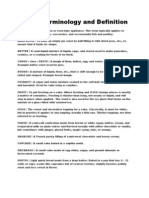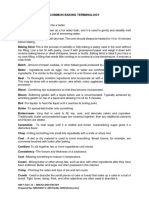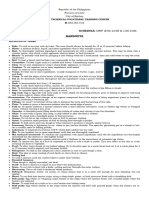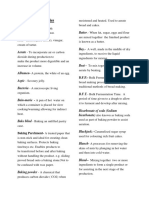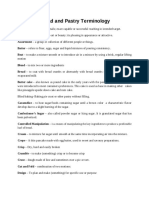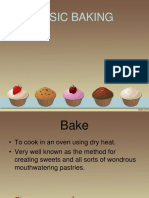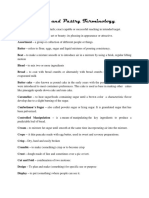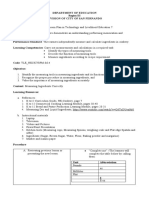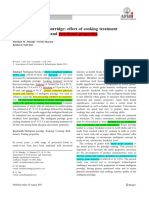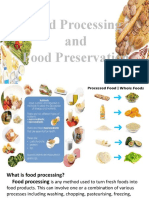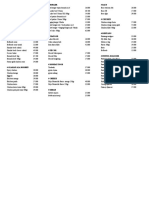0% found this document useful (0 votes)
8 views10 pagesBaking Terminologies
The document provides an overview of bakeries and confectioneries, detailing the types of baked goods produced and the roles of bakers. It also includes a comprehensive list of baking terminologies and culinary terms related to food preparation and cooking techniques. Key concepts include various types of flour, methods of baking, and essential ingredients used in the baking process.
Uploaded by
Irfan ZahidCopyright
© © All Rights Reserved
We take content rights seriously. If you suspect this is your content, claim it here.
Available Formats
Download as PDF, TXT or read online on Scribd
0% found this document useful (0 votes)
8 views10 pagesBaking Terminologies
The document provides an overview of bakeries and confectioneries, detailing the types of baked goods produced and the roles of bakers. It also includes a comprehensive list of baking terminologies and culinary terms related to food preparation and cooking techniques. Key concepts include various types of flour, methods of baking, and essential ingredients used in the baking process.
Uploaded by
Irfan ZahidCopyright
© © All Rights Reserved
We take content rights seriously. If you suspect this is your content, claim it here.
Available Formats
Download as PDF, TXT or read online on Scribd
/ 10


